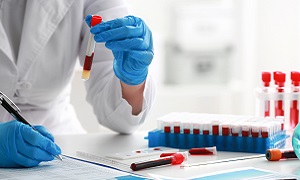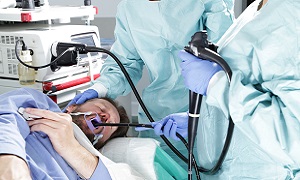Kaposi’s Sarcoma
Kaposi’s sarcoma is a cancer in which tumors with tiny blood vessels grow below the skin’s surface. They can also grow in other parts such as inside the mouth, the lymph nodes, the lungs, the liver, and the digestive tract.
Types
Kaposi’s sarcoma is generally of four types:
Epidemic or AIDS-associated- This type of sarcoma is usually the most common kind of sarcoma. It affects people suffering from HIV.
Immunosuppressive- This type of sarcoma is common among people who have taken organ transplants as well as drugs to slow down their immune system.
Classic- This type is generally common among older men in the Mediterranean, Middle Eastern, or Eastern European regions.
Endemic- This type is common among children and young people in Africa.
Symptoms
Depending on which part of your body is affected by the disease, you can show a number of symptoms.
Generally, the most visible signs are lesions on your skin. They are red or purple on light skin and bluish, brownish, or black on dark skin. They are not itchy and don’t cause any pain as well.
If Kaposi’s sarcoma shows up on your mouth, then you might have trouble eating and swallowing food.
If it occurs in your lungs, then the lesions can cause serious coughing or shortness of breath.
If Kaposi’s sarcoma occurs in the stomach, then the lesions in the stomach can cause bleeding and blockages.
Some other symptoms include:
- An upset stomach
- Vomiting
- Belly pain
- Bloody or black stool
- Anemia
Causes
Kaposi’s sarcoma is caused by the herpes virus HHV-8, which is also known as the Kaposi’s sarcoma-related herpesvirus. It spreads mainly through saliva, during sexual contact, or in interactions between a mother and a child.
Sometimes, people with a healthy immunes system can also carry the virus without any problem. However, it can trigger cancer in people having a weakened immune system.
Kaposi’s sarcoma is also around eight times more common in men than women.
Diagnosis
In order to diagnose Kaposi’s sarcoma, your doctor just needs to look at the skin. To confirm it, they will likely take a sample of tissue from a spot and look at it using a microscope. This process is called a biopsy. Other tests may also be required, such as:
Fecal occult blood test
Endoscopy/colonoscopy
Imaging tests
Bronchoscopy
Treatment
Treatment generally varies, depending on how many lesions you have, and how big they are, as well as how well your immune system is working.
In the majority of cases, antiretroviral therapy is the most effective way to treat Kaposi’s sarcoma. It might even clear up skin lesions.
If the virus is affecting many areas of your body, then you might need to undergo radiation therapy. The method involves a machine which directions radiation towards the lesions on your skin. This can kill the cancer cells or keep them from growing.
If your cancer has spread, you might need chemotherapy, which involves the use of powerful drugs to kill cancer cells. It is to be noted that chemotherapy can have multiple side effects, such as fatigue, vomiting, and hair loss.
Immunotherapy is another type of effective treatment, which works by boosting your immune system.



